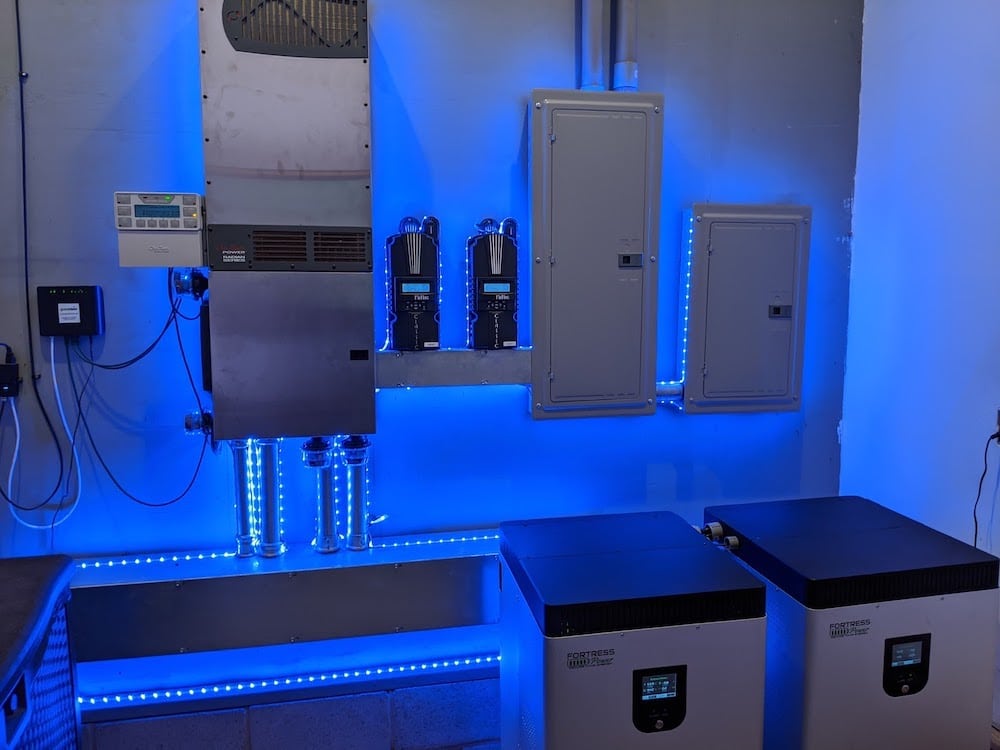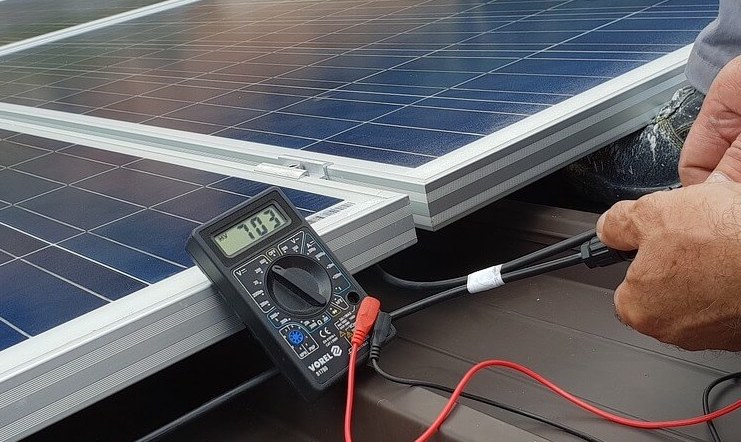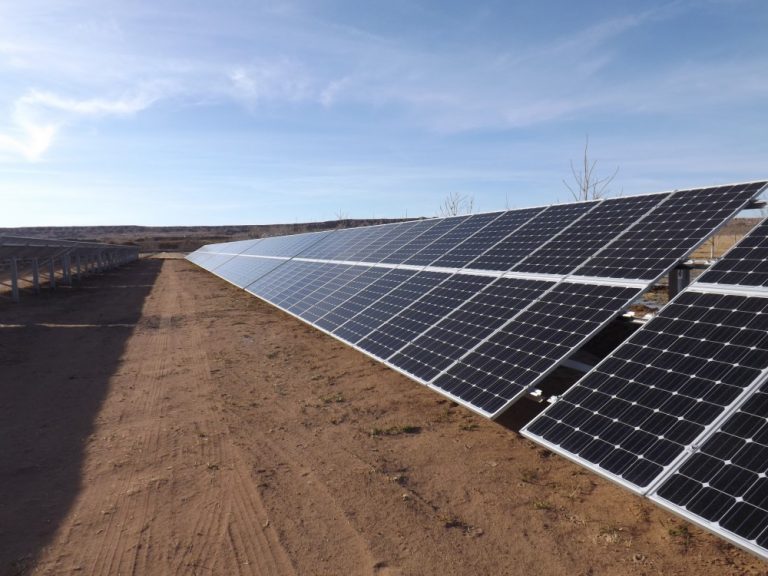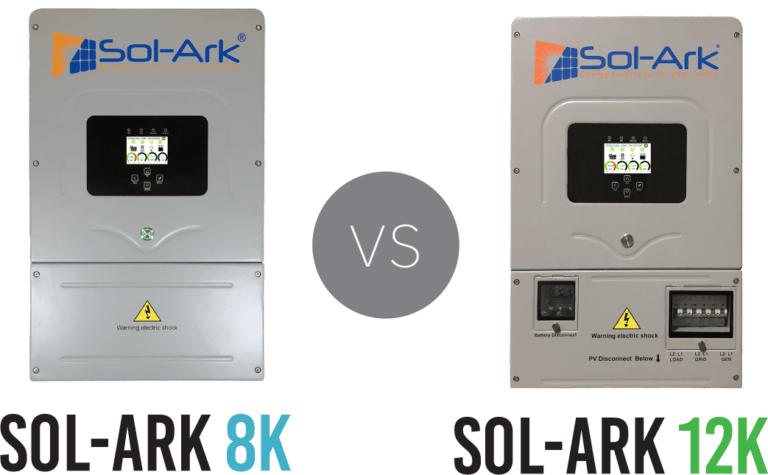Table of Contents
Is storing solar power finally starting to make sense for system builders? Because of factors such as lower buyback rates from energy companies, and a desire for self-sufficiency, the market has created a demand for battery innovation. Battery technology has matured significantly in the past five years. Are there Tesla Powerwall Alternatives that are reliable? Yes.
Tesla is perceived as a market leader in the solar battery race because of their sleek look and aggressive marketing, but are they really the number one choice? Before examining the feature comparison of these batteries, let’s look at a price breakdown of the four most popular lithium-based batteries out today.
Lead-Acid vs. Lithium
In this article, we’ll be focusing on cutting edge lithium batteries. Lead-acid batteries are still a very reliable alternative to the young technology of lithium. Up until just this year, lithium was considered to be experimental and too costly, but there have been a few technology disruptors who have brought lithium to the forefront of the battery conversation.
Pricing Breakdown of Top Lithium Batteries (Tesla Powerwall Alternatives)
This pricing breakdown accounts for supporting hardware required for an average battery system. Keep in mind that for the Powerwall specifically, Tesla recommends professional installation and may require you to use a certified installer. By contrast, most of the other batteries on the list can be purchased and installed without being contacted by a sales rep.
| Battery | Cost | Capacity | Cost per kWh |
| Tesla Powerwall | $7800 | 13.5 kWh | $577 |
| (Panasonic) Smart | $1976 | 2.85 kWh | $701 |
| LG Chem | $5880 | 9.8 kWh | $600 |
| Fortress Power | $12,420 | 18.5 kWh | $671 |
Click here to download this chart.
Now, the pricing does not tell the full story. Most of the batteries require professional installation. In fact, Tesla won’t allow customers to install their own batteries. The only battery on this list that doesn’t require some sort of professional installation is the Fortress Power eVault. This makes it’s effective cost per KWH much lower because installation is as simple as connecting the power cables to the inverter. So with that said, the Fortress Power battery is the most affordable because you don’t need a professional installer. Get one here.
Tesla Powerwall
Tesla’s Powerwall version 2 greatly improves upon the first generation and pushes lithium battery technology forward. Because of the massive investments, Tesla puts into their car’s lithium batteries, they are able to use that same technology for home solar systems. Previously they operated under the name Solar City for home solar, but now they do everything under the name of Tesla.
Tesla’s battery is probably the most widely known battery because of the company’s notoriety. Elon Musk also put a Tesla car in space. The Powerwall 2 is actually a very good value in comparison to other batteries on the market, but dealing with a very large company like Tesla is may have its headaches. If you’re interested in a sleek-looking battery, it may be the best choice, as well.
The Powerwall has a relatively low sticker cost, but most installers will tell you that it is a very expensive installation process. The battery also requires you to be connected to the internet at all times and will not work if you lose internet connectivity. This makes your power bank essentially useless in a grid-down scenario. Tesla does mention on their site that the battery has a cellular connection so that it can continue to operate without Wi-Fi.
From a strict value standpoint, the Tesla Powerwall outperforms LG and Pika (Now Generac) but is outperformed significantly by the new Fortress Power eVault.
Pika Harbor Battery System
Pika is another market leader in inverter technology. The company was recently purchased by Generac, and there have been a few changes in-stock availability. If you are interested in a Pika system, you can still get it through Generac. Of the Tesla Powerwall alternatives, Pika is one of the more expensive options.
Their harbor battery consists of a $2000 enclosure and six Panasonic DCB-105 3.38kWh batteries. The installation process is going to require a professional installer for most people, but you can purchase the equipment yourself if you want to install it. Because of the price of the enclosure, this battery system is the most expensive to install on our list.
The LG Chem Battery
LG has a battery that is usually paired with SolarEDGE inverters. It can also be used with SMA inverters. Like other batteries mentioned, it can decrease your need to sell back to the power grid. It allows you to use the power you make instead of selling it. The LG battery comes in a size of 9.8 KWH and can be purchased for around $5000. However, it will also require installation for most users, though it can be purchased by end-users. The LG Chem is one of the more commonly seen Tesla Powerwall alternatives. The fact that it is so commonly used could be a major bonus. This would make troubleshooting and information gathering easier.
The installation price for the battery is typically very high because it requires other hardware and is a very technical installation. The warranty also only guarantees the battery will work up to 60% of its capacity in 10 years, making it not a very great warranty.
A New Contender: The Fortress Power eVault
The Fortress Power battery uses LFP technology, which is much safer than the Lithium-Ion batteries in the Tesla Powerwall. LFP technology is relatively new, but it looks very promising. Due to the eVault’s massive size of 18.5 KWH, it is the lowest cost per KWH. The battery is also self-contained and has wheels. This means that almost any customer can install the battery themselves and roll them around with ease. The Fortress Power eVault is one of the most affordable Tesla Powerwall alternatives.

The new technology of LFP also allows for an exceptional amount of lifecycles in the batteries. Each eVault can last up to 6000 cycles. This is double that of the NMC technology used in the Tesla Powerwall.
So is it better than Tesla? It certainly looks like it, but we will continue to test these batteries in our systems.
What about the Sonnen Eco?
The Sonnen Eco battery is another great battery solution that was intentionally not included because it is more than just a battery. The Sonnen battery system includes a built-in inverter, making it a home backup system. The Sonnen battery can be purchased for around $10,000 without installation.
Should I get Lithium Batteries for my Solar System?
For many people, batteries are an afterthought. But you may be among those considering battery-based solar because of the lowering incentives for selling power back or because of an emergency preparedness mindset. Lithium is a very attractive option because of its lifespan, and low cost per KWH stored.
Buyers should be aware of the downsides and stick to lead-acid batteries if looking for simplicity. If you’re looking at lithium batteries and you were previously considering getting a Tesla Powerwall, you should consider the other options. There are many Tesla Powerwall alternatives. It seems through looking at the price and performance that the Fortress Power eVault is the top contender. We will continue to update our Youtube subscribers as we test these new solutions.




